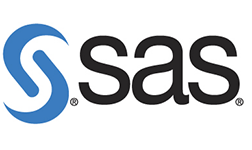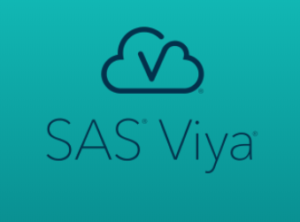
Why Is SAS Going Public?

SAS surprised the analytics community for the second time in a month this morning when it announced plans for an initial public offering (IPO) of stock. The company has penciled in 2024 as the year it will go public–just a hair under 900 days from now. What’s driving the unexpected move?
SAS provided some insight into its decision to go public in the press release it issued today. But the announcement led to new questions about the future of the company, some of which remain unanswered.
Here’s what we know:
In its announcement, the Cary, North Carolina, analytics giant stated that it “has achieved the financial strength, brand equity, and market leadership to make this move.”
Considering that the company is already recognized as an undisputed leader in the analytics field, has amassed billions of dollars in profit for its owners, managed to commit to a $1-billion investment in AI in 2019, and was named the largest privately held software company in the world–over 20 years ago–that statement leaves the reader wanting. It already achieved “financial strength, brand equity, and market leadership” many, many years ago. So why IPO now?
We got a little more insight from Jim Goodnight, who has been the company’s CEO for its entire 45-year existence. According to Goodnight’s statement, the company wants to “open up new opportunities for SAS employees, customers, partners and our community to participate in our success, ensuring the brightest possible future for all of us.”
This seems to bring us a little closer. SAS has earned a reputation as a great place to work, and we’re not just talking beanbag chairs and ping-pong tables. From the 35-hour work weeks to the free childcare and first-class amenities at its sprawling campus, it’s no wonder that SAS has landed on Fortune magazine’s “Best Company to Work For” list since it started the list in 1997. Google reportedly modeled its employee-friendly approach on SAS, which is saying something.
Goodnight takes care of his workers, which is why SAS’s annual turnover historically has been in the 3% to 5% range, much lower than the software industry as a whole, according to a 60 Minutes story from 2011 called “Working the Good Life.”. SAS’s approach is so unique that it’s been taught in management seminars at Stanford University. A Stanford professor estimated the company saves upwards of $80 million per year from having to replace departing workers, so it turns out this “employee-first” approach is good for business, too.
Which brings us back to the question: Why an IPO now (or in 2024, anyway)? Goodnight owns two-thirds of SAS, while co-founder John Sall owns one-third, SAS Corporate PR Manager Shannon Heath confirmed to the Raleigh News & Observer. If the company goes public, SAS would be able to grant stock options to its employees. This could end up being the ultimate perk to being a SAS employee, not to mention helping with attracting new talent.
Another clue to the timing can be found from the first unexpected event that SAS was involved with earlier this month: the possible acquisition by Broadcom.
The Wall Street Journal, citing unnamed sources, reported July 12 that Goodnight and Sall were in talks to sell SAS to the Silicon Valley tech company. The deal for SAS, which has 12,000 employees and had about $3 billion in revenues in 2020, reportedly was in the $15-billion-to-$20-billion range. After the news broke, Goodnight and Sall reportedly had a change of heart and left the negotiating table, as we reported.
It seems clear that something is afoot in Cary, and the future of SAS will look different than it has in the past. Goodnight, who is 78 years old, appeared to be grooming COO, CTO, and EVP Oliver Schabenberger to take the helm. But Schabenberger’s departure earlier this year signaled that wasn’t to be.
But the final question remains a puzzle. Why wait at least two-and-a-half years for an IPO? A lot can change over that period of time. Indeed, SAS previously had plans to go public back in 1999, but nixed them when the dot-com bubble burst.
According to SAS’s Heath, the time is needed to get SAS’s books in line.
“There are many requirements and reporting standards that accompany IPO-readiness, some of which require up to three years of adoption and compliance,” Heath tells Datanami. “While SAS has had consistent and regimented practices in these areas since the beginning, the requirements of private companies differ from those of public companies. This goal date ensures that we have built in enough time to meet certain of these requirements.”
Is it possible that SAS could sell itself in the meantime? Microsoft, with whom the company entered into an expanded strategic relationship a year ago, has been raised as a possible suitor. Maybe SAS is using the possibility of an IPO to raise the price that any would-be acquirer would have to pay?
As to the possibility of an acquisition before the IPO, Heath said:
“We are always evaluating our needs as a business, the needs of our customers and employees, and how we can best approach our goals—and we recognize these may evolve. Many companies go public to raise capital or access capital at a reduced cost. SAS doesn’t need capital. We are taking the steps to become IPO ready for our employees and our customers.”
Forrester VP and Principal Analyst Boris Evelson says an IPO makes more sense than an acquisition for several reasons. First, since SAS has been a private company for 45 years, “changing corporate culture due to M&A would be challenging. An IPO would leave company culture as is,” Evelson says.
SAS is also a very well-known, popular brand name, and an IPO assures that the brand name lives on, he adds. Finally, remaining a standalone company reduces the need to integrate SAS’s products into an existing line, which would include a lot of overlapping functions.
“An IPO allows most SAS employees to concentrate on products and customers, and not be distracted with post-merger integration,” he said.
Related Items:
SAS No Longer Exploring Sale to Broadcom: Report
Blurred Lines: SAS and Microsoft To Go Deep in Analytics Partnership
What’s Behind SAS’s $1-Billion AI Investment

































